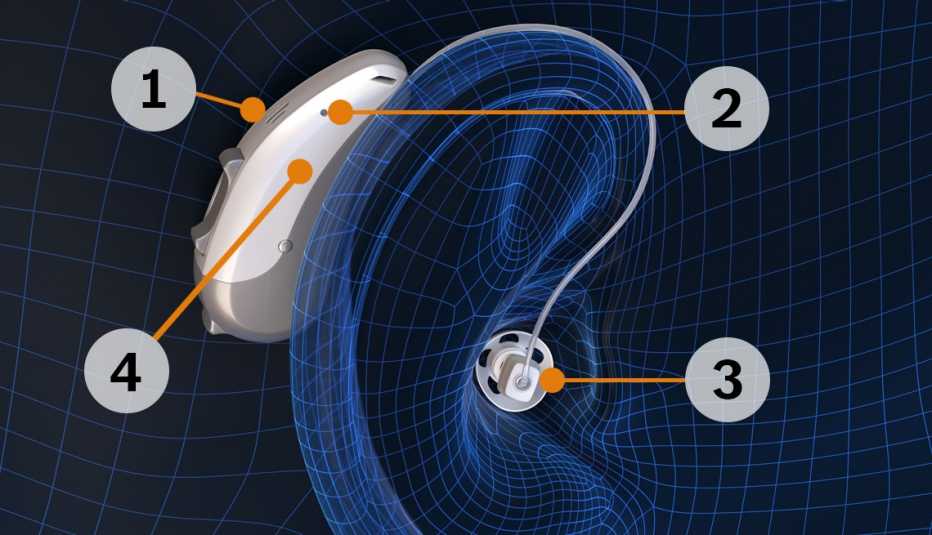AARP Hearing Center
Hearing loss affects about 25 percent of Americans ages 55 to 64 — and 33 percent of those 60 to 74. Yet 80 percent of people who would benefit from a hearing aid don't use one, the Hearing Loss Association of America (HLAA) reports. High costs are a big reason, but that may change: A 2017 law will allow hearing aids to be sold without an audiologist's consultation. The Food and Drug Administration (FDA) still has about 16 months to issue regulations before such over-the-counter devices will hit stores.
Here is a rundown on hearing aids:
Behind-the-ear (BTE) hearing aids
What they do: They'll improve your hearing across specific ranges of the audio spectrum. An audiologist tests your ability to hear different frequencies and understand speech, then adjusts the hearing aids to compensate for your deficiencies. In the most popular style, called receiver-in-the-ear (RITE) hearing aids, the microphone and processor sit in a casing behind the ear; the speaker rests in the ear canal.
Cost: $2,400 per ear, on average
Where to get them: From a licensed audiologist
Number sold: About 3.1 million units in the U.S. in 2017
Custom in-the-ear (ITE) hearing aids
What they do: Just like BTE hearing aids, these must be fitted and ordered by an audiologist after a hearing test. The audio technology is encased in a custom-molded plastic shell that fills the outer part of the ear canal. “They can give you lower tones because your ears are closed up,” says Abram Bailey, a doctor of audiology and founder of the website Hearing Tracker, which publishes hearing aid reviews and offers consumer information. But “they're more likely to be affected by ear wax, moisture and sweat.” Another effect of this type of device: Your own voice seems louder to you.
Cost: $2,400 per ear, on average


Where to get them: From a licensed audiologist
Number sold: About 600,000 units in the U.S. in 2017
Cochlear implants
What they do: These devices, implanted through a surgical procedure, use electrical current to stimulate auditory nerve fibers. They are for people with profound hearing loss.


































































